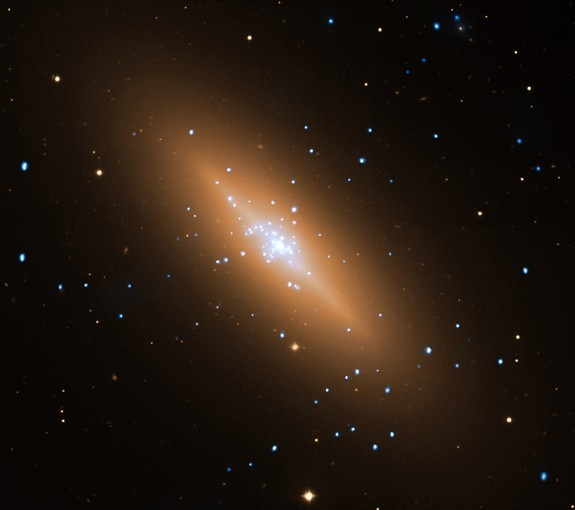Astronomers Discover Black Holes in Milky Way up to 20 Times Bigger Than Sun

Two black holes weighing 10 to 20 times more than the sun have been unexpectedly discovered in the Milky Way by astronomers in Australia.
Scientists at the International Centre for Radio Astronomy Research found the black holes in an ancient cluster of stars, named M22. They believe the cluster could contain as many as 100 black holes.
The research, published in the journal Nature, originally intended to find one large black hole in the middle of the cluster.
However, the discovery of two black holes was a huge surprise, as previous research suggests this does not happen in a globular cluster that is 12 billion years old.
Dr James Miller-Jones, co-author of the study, said the research "was originally searching for just one larger black hole within the cluster of hundreds of thousands of stars which, when viewed from the naked eye, resembles a hazy round 'puff' of light.
"Simulations of how globular clusters evolve show many black holes are created early in a cluster's history. The many black holes then sink towards the middle of the cluster where they begin a chaotic dance leading to most being thrown out of the cluster until only one surviving black hole remains.
"We were searching for one large black hole in the middle of the cluster, but instead found two smaller black holes a little way out from the centre, which means all the theory and simulations need refinement."
Marek Kukula, public astronomer at the Royal Observatory Greenwich, also commented on the findings. He told IBTimes UK:
"I think this discovery goes to show that the universe is still full of surprises. We expected that star clusters like this would have a single black hole in their centres but these new observations seem to show that there are actually several black holes scattered throughout the cluster.
"Astronomers will now have to revise their theories about how star clusters form and change with time - this is how science works, by revising and improving ideas."
Black holes are what remain when some stars die. It collapses in on itself and creates a gravitational pull from which not even light can escape. Once an object is pulled into a black hole, it is said to have entered the event horizon; the point from which escape is impossible.
The newly discovered black holes are around 10,000 light years from earth but they can easily be seen with a telescope. How many more black holes are in the cluster cannot be determined as they have to be actively feeding on nearby stars to be detected.
Dr Miller-Jones said the researchers now plan to find out the properties of the two black holes discovered.
© Copyright IBTimes 2025. All rights reserved.






















